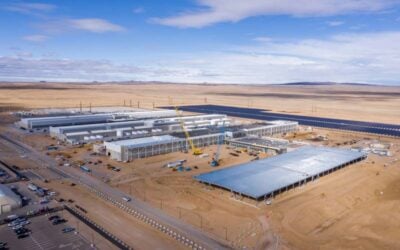
The Australian market for residential battery storage grew by an estimated 55% in 2022 from the previous year, according to solar market consultancy SunWiz.
The company’s latest annual report on the battery storage market in Australia also found that about 15% of new solar PV installations are being combined with home storage, an increase from around 10% in 2021.
Enjoy 12 months of exclusive analysis
- Regular insight and analysis of the industry’s biggest developments
- In-depth interviews with the industry’s leading figures
- Annual digital subscription to the PV Tech Power journal
- Discounts on Solar Media’s portfolio of events, in-person and virtual
In all, an estimated 47,100 systems were deployed last year equivalent to about 589MWh capacity, with the market now at around 180,000 cumulative installations adding up to about 1,920MWh of capacity installed since 2015. In last year’s edition, SunWiz totted up an estimate of 333MWh of installations during 2021, as reported by Energy-Storage.news at the time.
The average residential storage battery system capacity is 12.5kWh, and in most of the country, payback on investment can be achieved in 10 years or less, with payback in eight years in some states.
While there are therefore some key differences in market dynamics from state to state, for example in state-level incentive programmes and how they are structured, SunWiz found that every Australian state and territory saw “significant growth” in battery installations in 2022.
Indeed, 2022 was a year that saw installation records smashed in every state except South Australia, partly due to that state already having a head-start that makes it the leader in per-household uptake of storage.
Australians are certainly environmentally aware and climate-focused as a society, evidenced by the high uptake of rooftop solar many parts of the country have seen for years. More recently though, the economic drivers for solar PV with batteries have become too good to ignore for many members of the public.
“Skyrocketing” electricity prices from utilities mean that Australian homes and businesses are “taking back power from the energy system by turning to cheaper, renewable sources of energy,” SunWiz managing director Warwick Johnston said, with solar-plus-storage guaranteeing energy bill savings.
“Australians responded to Russia’s invasion of Ukraine, COVID, the energy price crisis, and worsening climate fuelled disasters by installing home solar systems linked to batteries, in an effort to increase their energy independence, resilience and self-reliance,” in 2022, according to Johnston.
The results are even more striking when considering that the number of PV installations in Australia fell year-on-year, in contrast to considerable growth in energy storage system (ESS) installations, the result of both the rising cost of electricity and a trend towards self-sufficiency and resiliency that SunWiz acknowledged is an international one.
Battery-only installations comprised a very small share of the overall market, whereas a quarter of distributed ESS system installs were retrofits at existing PV installations, and 55% were installed concurrently with new PV systems.
States with strong incentive and subsidy programmes, including South Australia, the Australian Capital Territory (ACT) and Victoria had the highest attachment rates of battery storage with new PV systems. Meanwhile New South Wales remains the state with the most behind-the-meter ESS installs, about 55,000 of the national total, with Victoria the next with 44,284 installations estimated by SunWiz from compiling and analysing various data sources including government registers. Overall, Victoria and New South Wales each accounted for 27% of national market volume in 2022, SunWiz found.
However, battery storage hasn’t quite gone mainstream just yet in the way that residential PV has: taking into account the number of existing PV systems in the country as well as the total number of dwellings versus the number of home batteries installed showed that market penetration remains low, at between 1.6% to 5.3% of the total addressable market size. In some parts of Australia, around one in four or one in three homes have solar.
That implies that residential energy storage is largely the domain of the ‘early adopters’, rather than the mainstream, but the growth seen does at least mark a transition away from the ‘innovators’ who go before even the early adopters in what might be called the technology acceptance timeline.
Energy-Storage.news’ publisher Solar Media will host the 1st Energy Storage Summit Asia, 11-12 July 2023 in Singapore. The event will help give clarity on this nascent, yet quickly growing market, bringing together a community of credible independent generators, policymakers, banks, funds, off-takers and technology providers. For more information, go to the website.






